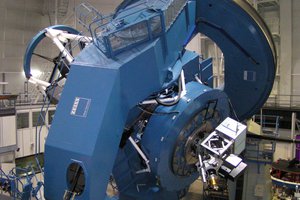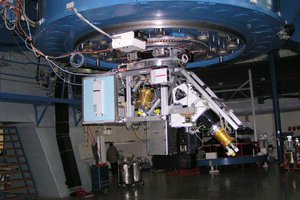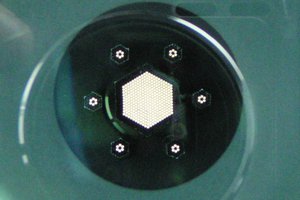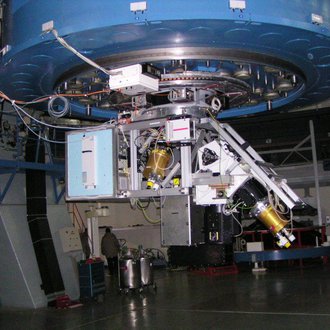PMAS
Since its commissioning in 2001, PMAS, the Potsdam Multi-Aperture Spectrophotometer, which was developed and built at AIP, is in regular operation at the Calar Alto 3.5m telescope, where it is one of the most used instruments by the community. PMAS is a dedicated integral field spectrograph, featuring two integral-field units (IFU) and an optimized optics to cover the entire wavelength regime between 350 and 900 nm. Over the years, PMAS received various technological upgrades (e.g. with a larger detector and a new grating, a spectro-polarimetry mode, a large-grasp fibre bundle, etc.) and was additionally used as a technological test-bench (e.g. nod-and-shuffle technique, Fabry-Perot etalon, super-continuum light source).
In cooperation with the research and innovation centre innoFSPEC Potsdam a novel laser frequency comb with PMAS was tested. This frequency comb generates a regular emission line spectrum, which should enable a more precise wavelength calibration of the spectrograph than the use of classical spectral lamps.
During the last years, PMAS was mainly dedicated to theCALIFA survey. The Calar Alto programme committee allocated 250 dark nights, to measure the properties of around 600 nearby galaxies, which is the largest and most comprehensive wide-field IFU survey of galaxies carried out to date, addressing fundamental issues in galaxy evolution. The unique PMAS fibre-bundle PPak, with a field of more than one arcminute on the sky, is well suited, to observe efficiently the spatial properties of these galaxies.
Further Information



